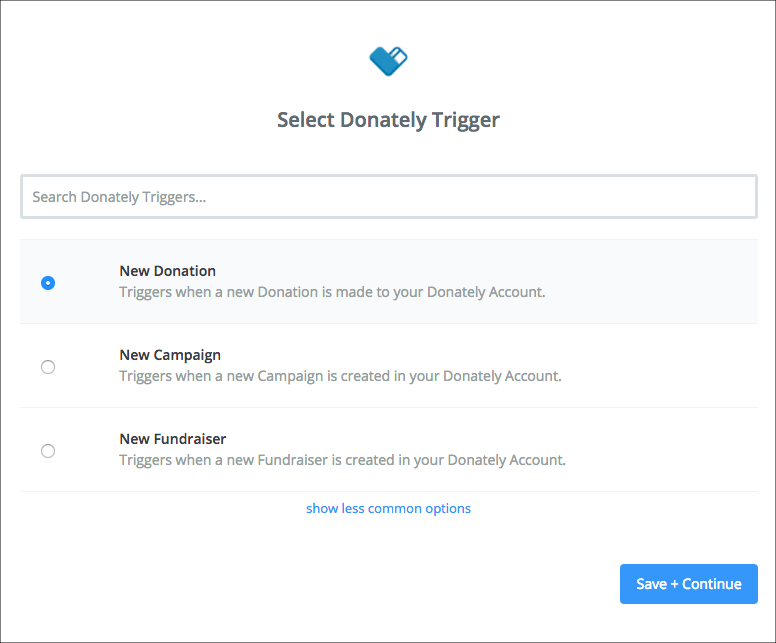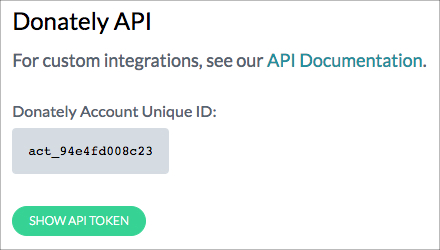Donately automatically sends a donation receipt after each donation, but if you want a completely custom email receipt, the easiest way to enable that is through Zapier. We partner with Zapier to make complex connections like this simple.
Although Zapier does have a free tier, sending a custom receipt per Campaign requires adding a third step, which is considered a "Premium" feature. For more information on their plans, see their pricing page. Zapier does offer a discount for nonprofits; see here for more information.
You'll need to sign up for a Zapier account if you don't already have one. Signing up is very quick, and you can always start on the free plan and upgrade as needed.

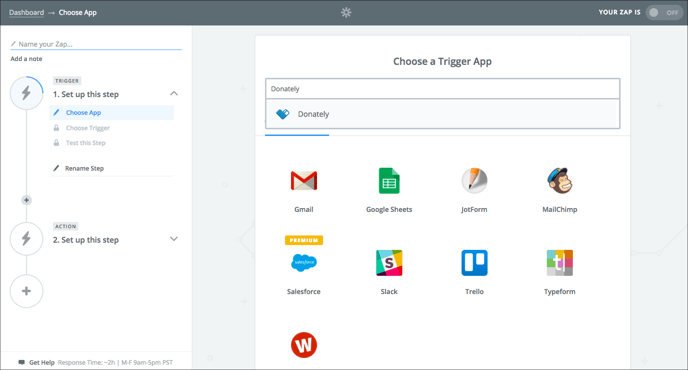
This means that the "Zap" will trigger every time a donation is made. Click "Save + Continue"
Note: You should only have to do this once! If you've already done this, please skip to Step 6.
The next step will trigger a pop-up, asking for information to connect your Donately account to Zapier. See the instructions below on how to find each of these elements.
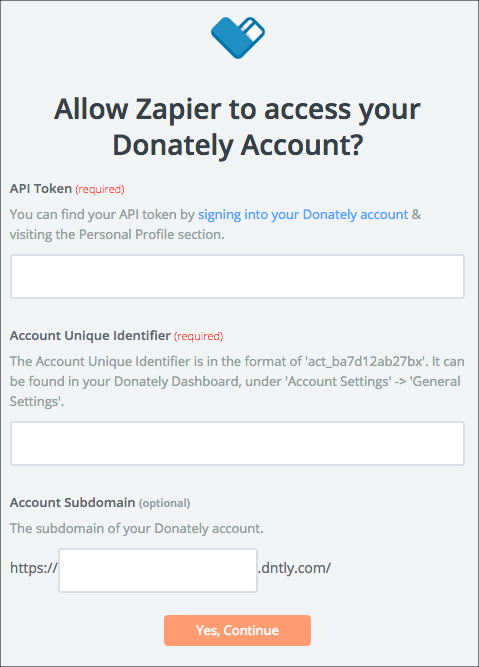
Go directly to this page, or click on "Integrations" along the left-hand menu. Once on the "Integrations" page, click "Donately API". The next screen will have both your Account ID as well as your API token. Simply click "Show API Token" to reveal your token.
Copy and paste both into the appropriate fields in the Zapier pop-up. Note: When you paste in your Account ID, be sure no space is added to the end!
Go directly to this page, or click "Account Settings" from the left-hand menu. Your "Account Subdomain" is your "Account Slug" in the Donately dashboard. This is the second field under the "Account Attributes" section.
Copy and paste the slug into the "Account Subdomain" field in the Zapier pop-up.
After you fill in all of that information, click "Yes Continue." When you're back to Zapier, click "Save + Continue".
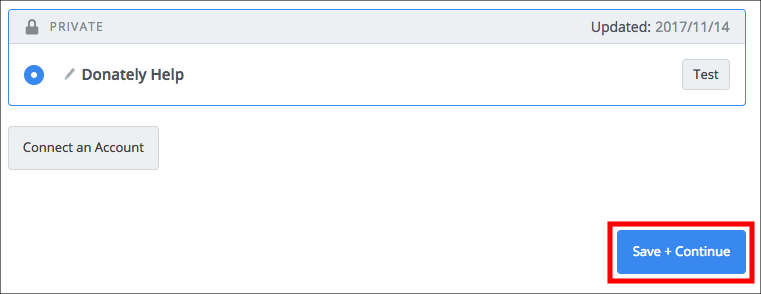
For the next screen, you'll need to be sure you have at least 1 donation to pull from. If you do not have any donations, you can create a cash/check donation. When you have at least one donation in there, click "Fetch & Continue."
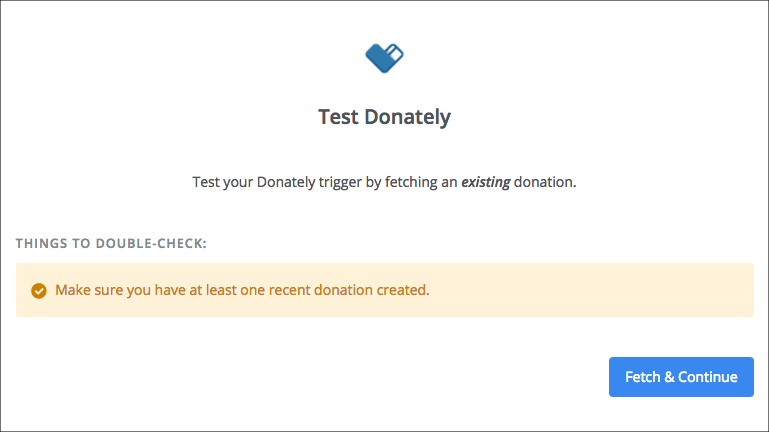
If this is successful, you should see this screen:
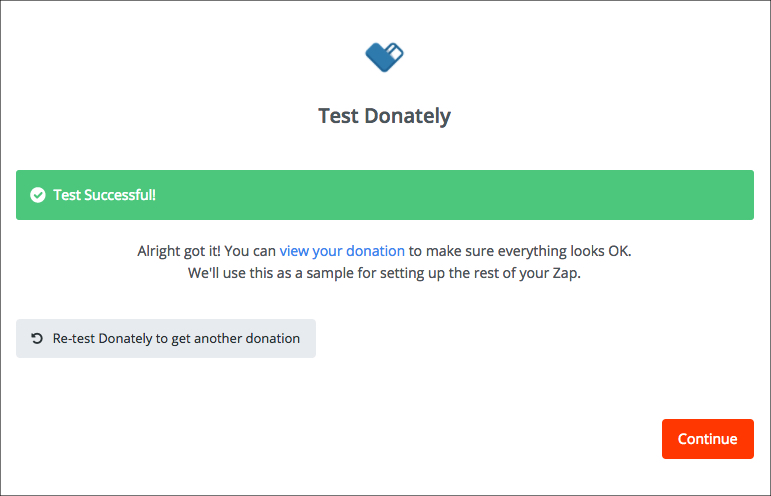
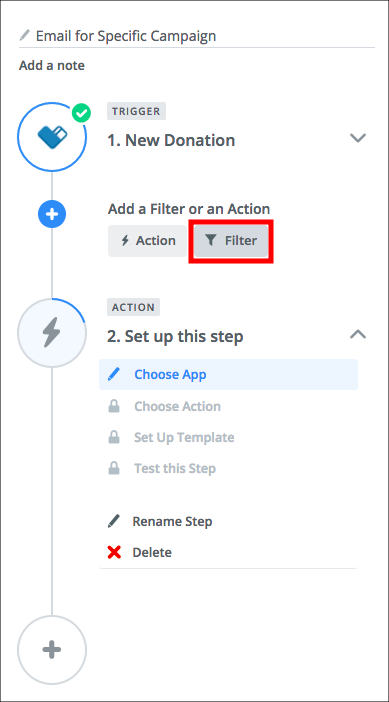
To find your campaign ID, head to your Campaigns page. You can get there by clicking on this link, or by clicking "Campaigns" from the left-hand menu in your dashboard.
One on your Campaigns page, click on the Campaign for which you'd like to send a custom receipt.
In the URL of the Campaign detail page, you will see the id as the ID at the end of the URL. In our example, it is "cmp_12356".

Go back to Zapier, and use the screenshot as a guide for how to fill in these fields. Note: This is not the Campaign name. It will need to be the Campaign ID found in Step 7.
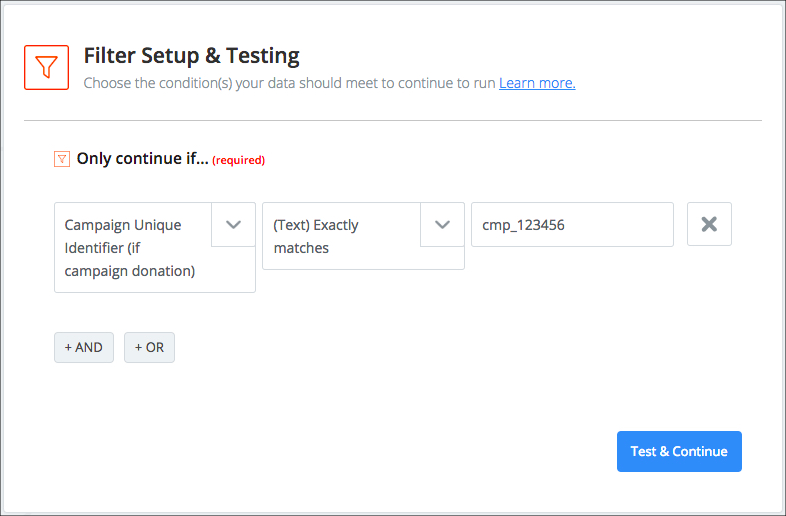
Click "Test & Continue". The next screen will tell you whether the example pulled in would have been allowed to continue given the filter.
For this example, we will be using Gmail.
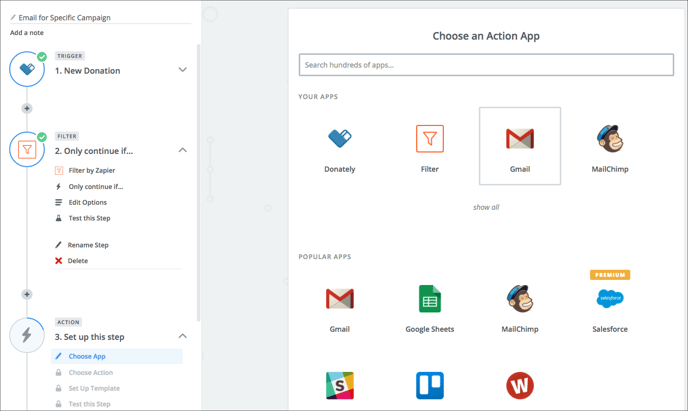
Then link your account on the next page.
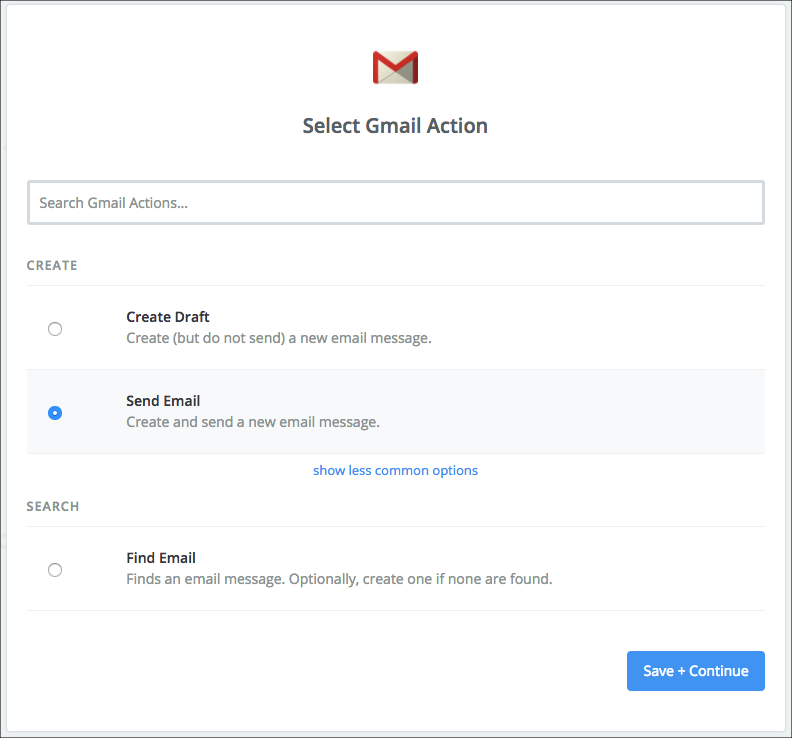
Sign into the Gmail account from which you'd like to send this email. Do this by clicking "Connect an Account" and follow the prompts.
For the required "To" field, click the button on the right of that field, and select Email, which pulls from the donation.
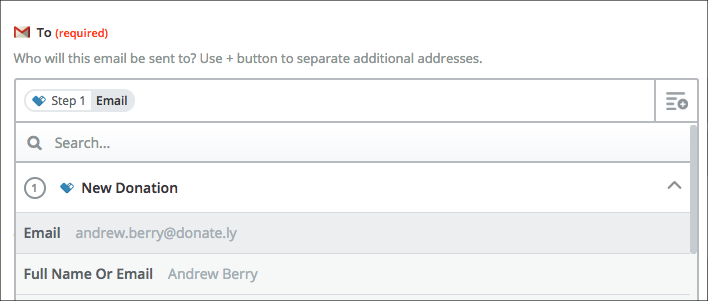
Fill out the "Subject" and "Body" with whatever you'd like the email to read. Keep in mind that you can include custom attributes from the donation, such as donor name, address, donation amount, etc, to make the email a little more personal.
If the test donation that Zapier pulled in was real donation information, not test data, then you may want to skip the test. If you do test, it will send to the email to whichever email was used when Zapier pulled an example. This means it could send to a donor!
If you'd like to skip the test, click "Skip Test & Continue". If you would like a test email to send, click "Create + Continue".
You should see a confirmation screen on the next page that the test was successful. If so, click "Finish".
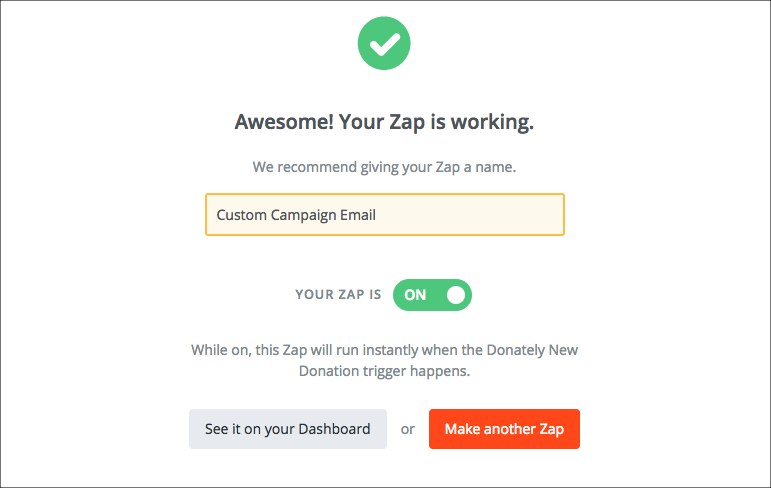
That's it! You may want to try making a few test donations to the campaign to be sure it is firing as expected. Additionally, you'll probably want to turn off Donately's automated emails at this point so donors don't get two. Click here for instructions on how to do that.
